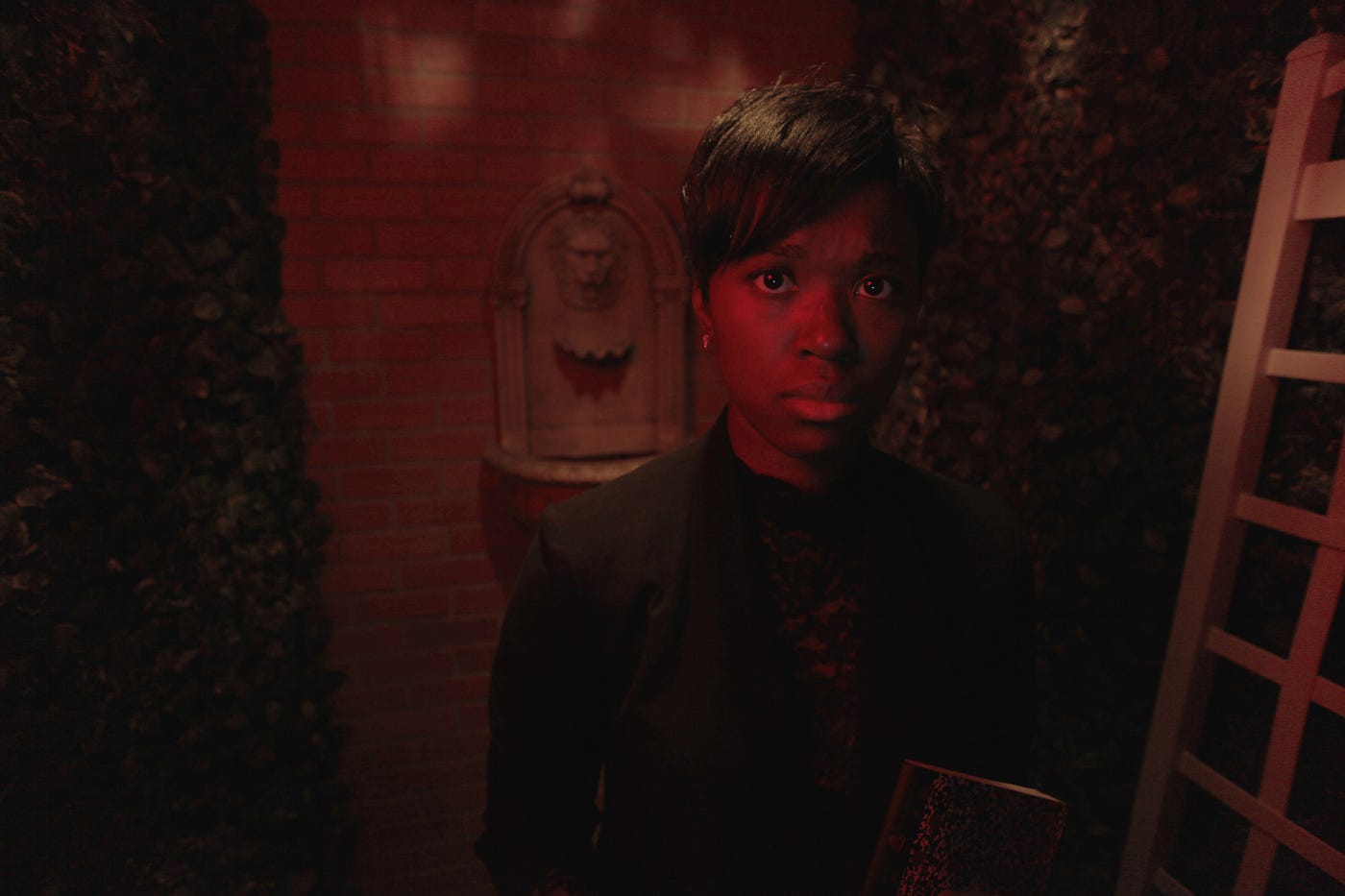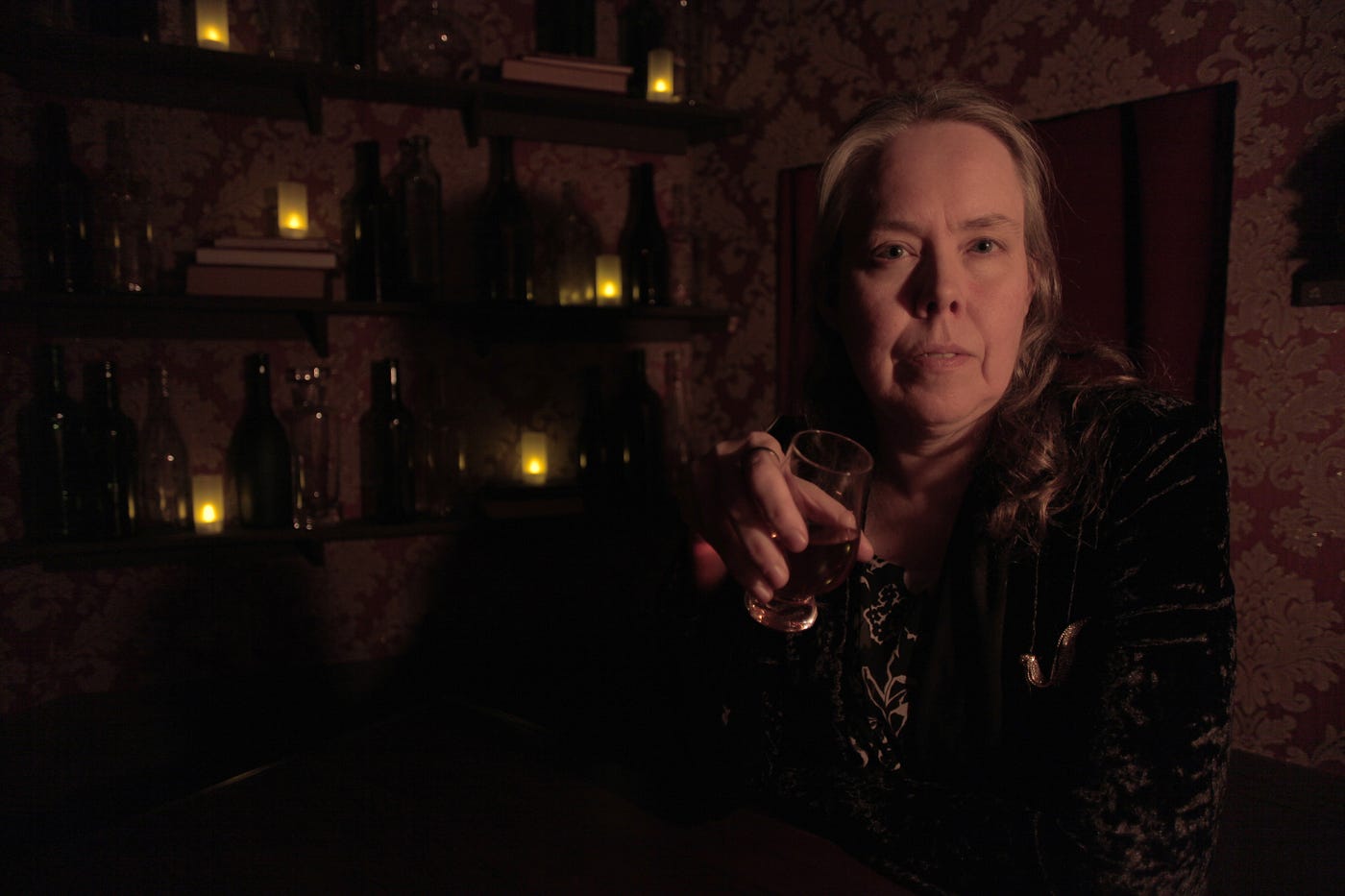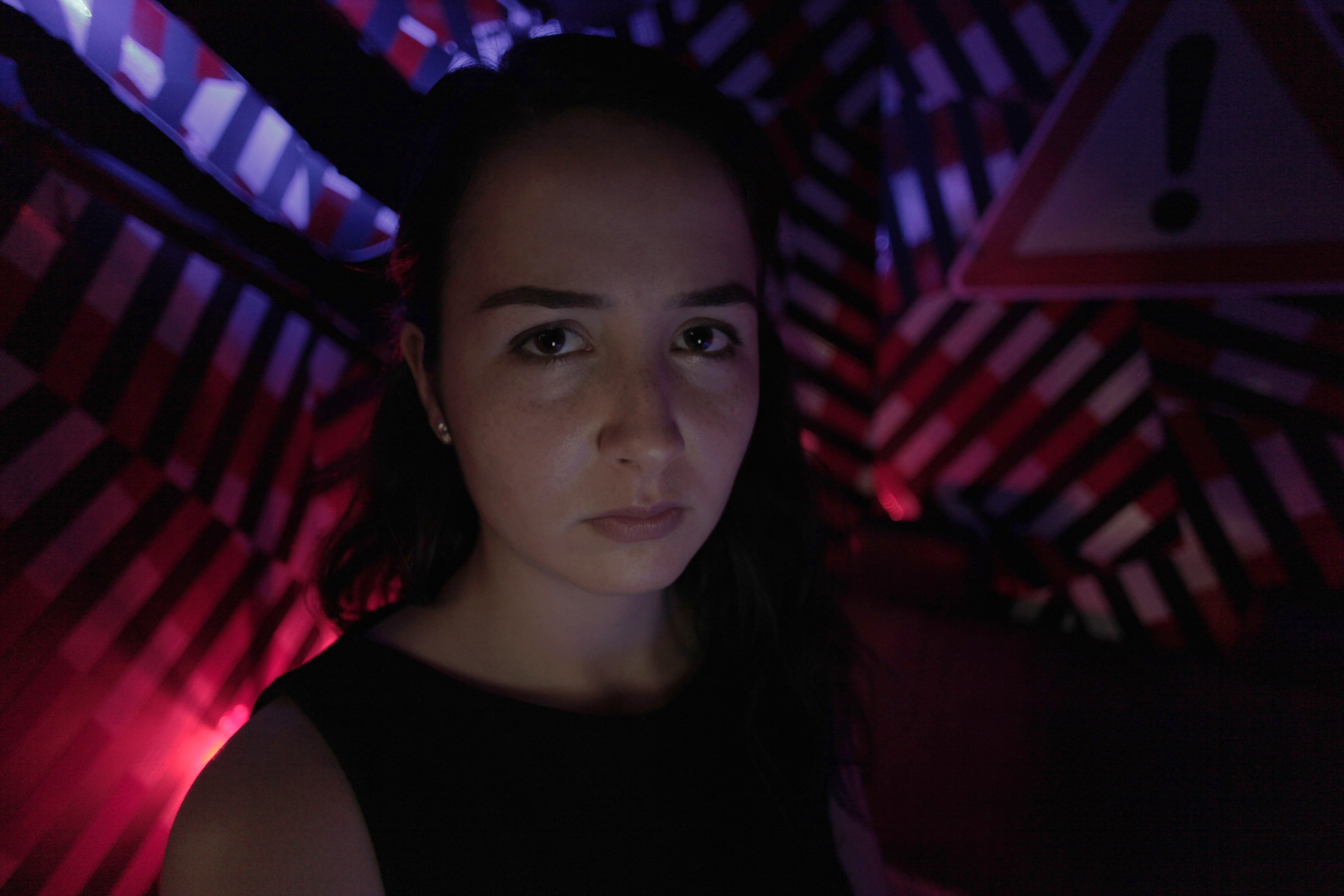
The following is based on a preview performance.
Sometimes it seems like the whole of the immersive theatre scene in Southern California is obsessed with death.
Even when one sets aside the dense layers of LA’s rich horror community, show after show this past year has meditated on death, grief, and loss. It’s easy to suss out why: there’s a pall over the culture as a whole. It feels, constantly, like something has died and we’re all just trying to navigate our way through the stages of grief.
The latest entry in this genre is the sophomore effort from E3W Productions, whose stellar debut In Another Room heralded the arrival of skilled artisans whose work stood toe to toe with the best intimate work LA has to offer.
Bitter at the End finds the company testing new waters, with mixed results.

Built around a four chapter structure, the new work tells the story of a family gathered together to say goodbye to a woman named Grace. For each mourner Grace meant something completely different, but her impact — even in subtle ways — was tremendous. The writing is bravura throughout, shining through even when preview night jitters in the performances occluded some of the delivery of the text.
Each chapter of BATE takes on a different form, resetting the audience’s distance from the action and characters. The immersive centerpiece is chapter three, which atomizes the audience and performers, giving each actor in the ensemble the chance to practice the art of the one-on-one.
Here E3W’s work shines. The one on one sequences I got to experience — four segments with three actors — were dynamic and moving: meticulously crafted confessionals that blended production design, writing, directing and performance into cohesive wholes. If BATE were nothing more than this third chapter it would be worth the price of admission.
It’s in the other chapters, which hew more to site-adaptive theatre than immersive, where things on preview night were less engaging.
BATE opens with the wake for Grace, the first few moments a stilted introduction to each of the characters by way of the host pointing them out. It’s an awkward moment that wouldn’t happen in real life, and belies a fear that the audience won’t click in to who’s who in the dramatic writing that’s to come.
I can understand the impulse, as so much of what the first chapter does is about setting up the third, but the whole of that first scene would be better off with some judicious cuts starting with that “dramatis personae” moment at the start. The truth is that the script that comes after does all that heavy lifting, and without the fundamental mystery of “who the hell are these people and what the heck is going on?” that first chapter drags. At one point I feared that this was all there was.
Get Noah J Nelson’s stories in your inbox
Join Medium for free to get updates from this writer.
SubscribeSubscribe
Chapter two brings things up a notch, moving away from the naturalism that dominates the first part into an abstract, poetic space.
What was intriguing about this sequence on preview night, from a critical perspective, is that some of the actors used this opportunity to create steady eye contact and connection between themselves and the audience, and some did not. There’s a distinct power in this choice, and the denial of eye contact is a way of communicating status relationships, discomfort, fear — indeed a whole range of what we’d typically classify as “negative” emotions.
Yet the denial of eye contact here can also act as a blockage of connection with the audience as a whole. A short-circuiting of the venerability that would otherwise be on display. There’s no denying that eye contact with strangers can be deeply unsettling, in fact it’s not something I particularly seek out on a day to day basis. That form of silent speech can say far more a person’s state of mind than any words.
I can’t help but feel that when an actor isn’t making eye contact in some moments that they aren’t grounded into the world of the story. If the actor isn’t grounded, how can I be? So this sequence is a mystery to me: were some characters directed to avoid contact because of what they represent? Was it an acting choice based on the character’s internal arc? Or a sign that some of the cast hadn’t yet connected with the material internally? This is the kind of thing that a decent length run, a kind of luxury we rarely have in the LA scene, could resolve itself.
The bones, after all, are here. It’s the flesh that takes time to manifest.

In chapter three the nature of the piece reveals itself as the story balances the human scale with the mythic. Firing on all cylinders, the less said the better as the act of discovery and each audience member’s personal path will determine their experience. I will pause to praise actress Nerea Duhart (Frankie), with whom I had two scenes during the one-on-ones. Duhart hits her notes with precision, creating a moment and not just a scene. Nor did Fred Cross (Mike) or Maria Olsen (Gluttony) disappoint in the all too brief time I had with them in their spaces. The E3W team casts and directs these types of scenes brilliantly and art director Patrick Blanchard knocks each actor’s performance space right out of the park.
The dismount of the show left me cold on a few levels.
For starters, there’s a deep nihilistic streak in the material which reflects some of the darkest thoughts possible about mortality and legacy. It’s not wrong, but it’s also just one lens on the world. One that I’ve no particular use for anymore. I processed those thoughts and feelings long ago, and found them lacking. There’s also something airy (in the intellectual sense) in how this vein is tapped as the show wraps up. That may have a lot to do with the fact that the final chapter and coda return the audience to the small group format: all seven of us re-gathered for the denouement.
What works well in this sequence is the strength of the storytelling: the story of characters that we spent no time with in the third chapter are clear as a bell thanks to the way the script is sewn together. Completing a circuit like that is no small feat, and just how the team did that is worth studying,.
The show’s coda at preview seemed to be an attempt to pop the bubble of nihilism at the end, but this played instead like a flippant rejection of the show’s closing argument. A negation of the “reality” of the production just before returning the audience to their daily lives. It reads, like the opening “who’s who,” as a lack of confidence in the rest of the material. A lingering sign of self-doubt that is charming on a meta-level, but undermines the production at hand.
While I have philosophical issues with some of the meditations on death in this piece, having a work provoke such feelings is still a bonus. Most of what’s working against Bitter At The End living up to the level of the company’s debut work could be hammered out with some tightening here and there. What’s more: it is always a good sign to see a young company take risks and mess with “what’s worked” to explore new territory.
That rare courage is truly sweet.
Bitter At The End, written and produced by Austin Keeling, Aaron Keeling, and Natalie Jones & directed by Austin and Aaron Keeling plays March 15-18 and March 29th — April 1st at an undisclosed location in the Harvard Heights neighborhood of Los Angeles. Tickets are $70 dollars.
No Proscenium is a labor of love made possible by our generous Patreon backers: join them today!
In addition to the No Proscenium web site, our podcast, and our newsletters, you can find NoPro on Twitter, Facebook, YouTube, Instagram, in our Facebook community Everything Immersive, and on our Slack forum.




















Discussion